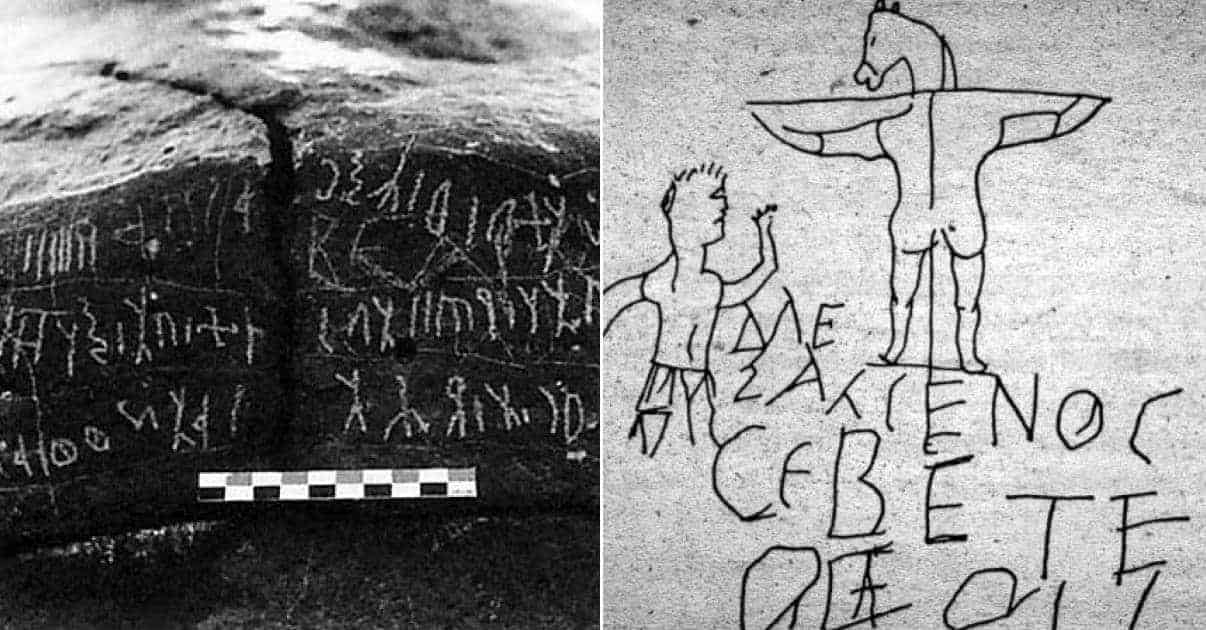Graffiti are words or pictures informally inscribed or painted on walls, floors, and objects. Modern graffiti can be a form of protest or individual display. They can be regarded as public eyesores or works of meaningful art, depending on context or viewpoint.
However, graffiti is no modern phenomenon. As the Italian origin of the word –graffio- suggests, the earliest graffiti was scratched on cave walls, as a way of communicating messages or as a form of self-expression. As time past, graffiti was used not only to pass on messages but to offering advice, create art and even ensure magical protection.
Historical graffiti also fills in the gaps in history. It resurrects lost words and languages not found in books and texts. Graffiti even preserves the names and details of the lives of ordinary people not recorded in the history books. It records peoples’ preoccupations, their beliefs, what they feared, and their politics- even their love lives. It helps us appreciate the differences and similarities between people then and now.
People have discovered ancient graffiti in every culture and context: in public and private buildings, on rocks, cave walls- even on ceilings. Here are twelve examples from around the world.

Pompeiian Graffiti
To date, archaeologists have identified 2800 pieces of electoral graffiti around Pompeii. Painted at night, on the walls of buildings along main thoroughfares, they were an entirely official way of drumming up widespread support for candidates for public office.
Some recommended candidates by their good character: “I beg you to elect Publius Furius duumvir, a good man.” Others used the weight of the candidates’ supporters to try and sway others: “The fullers all ask for Holconius Priscus as Duumvir” declared a notice on the frontage of Stephanus’s Fullery. Others candidates dispensed with persuasion and went for all-out bribery. In an election notice painted on the wall of the House of Trebius Valens, Lucius Satrius Valens offered “20 pairs of gladiators” for the entertainment of the town if he was successfully elected.
Different pieces of graffiti can also be put together to form a picture of individuals’ lives. The Pompeiian baker, Paquius Proculus is one such case. Proculus had a house along the Via del Abbondanza and had become wealthy enough to stand for election. Graffiti on the front of his house declared he was standing for the position of duumvir-one of the two chief magistrates of Pompeii. We know he was successful- because of graffiti daubed on the outside of the amphitheater, declaring he had won.
It was also typical for enthusiasts of the games to daub the results of matches on the tombs that lined the roads leading into and out of Pompeii. They give us the names and identities of some of Pompeii’s’ gladiators. Some gladiators went by single names such as ‘Felix’- a sure sign they were slaves. Others, like the popular and successful Marcus Attilius, were free volunteers. We know this because Attilius sported a first name and a clan name.
We also know Attilius was a successful gladiator from the number of times ‘V’ for victor appeared above his name. The graffiti also tells us that it was far more common for losers to be reprieved than killed outright. The ‘M’ for missus- the Latin word for ‘reprieve’ is far more common than the of ‘P’ for perrit or death.
Some gladiators liked to use graffiti to boast of their prowess out of the arena. The Thracian gladiator Celadus boasted on the walls of the gladiator barracks, that he “makes the girls sigh.” But not everyone in Pompeii was lucky in love. “Weep, you girls. My penis has given you up. Now it penetrates men’s behinds. Goodbye, wondrous femininity!” declared one disillusioned man on a wall of the tavern of Verecundus.
Pompeii’s sexually explicit graffiti, however, is by no means unique- as can be seen at Astypalaia, a remote island in the Aegean.

